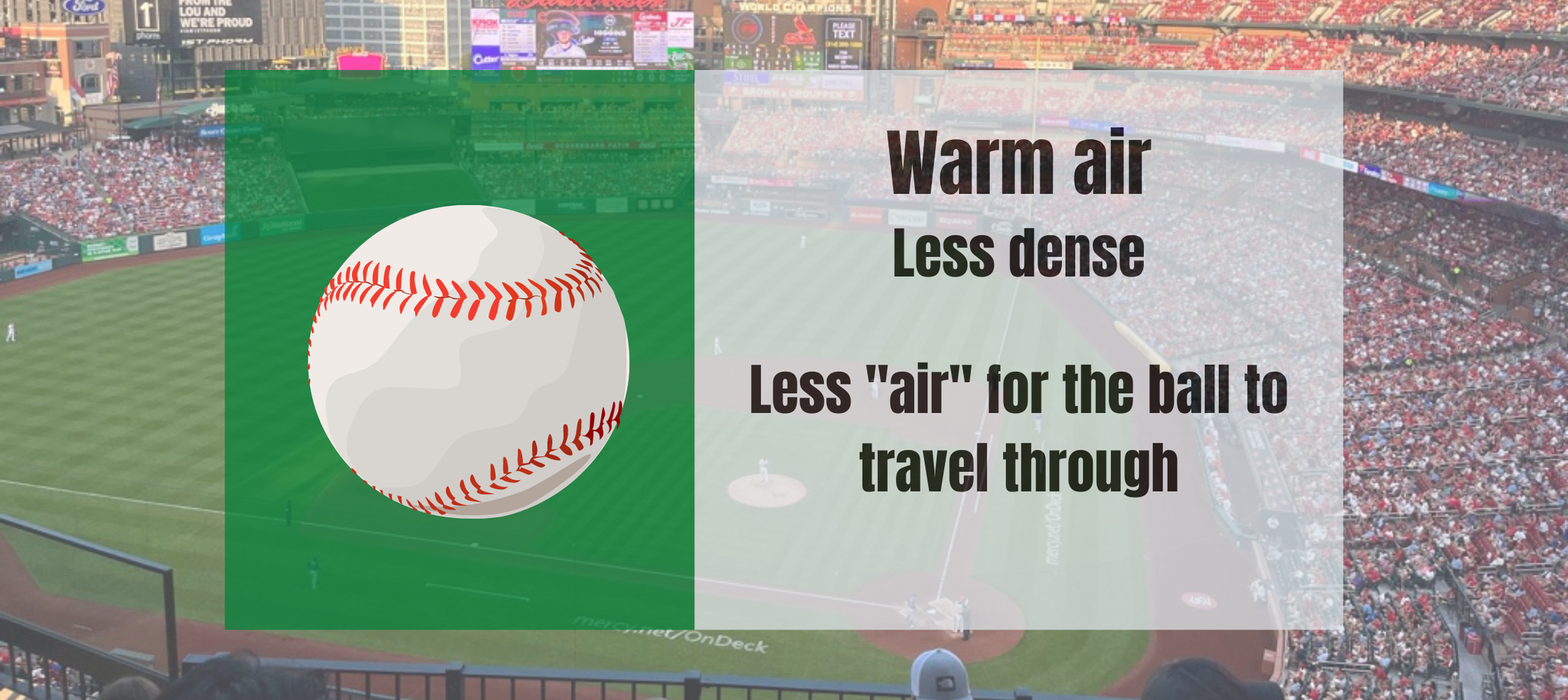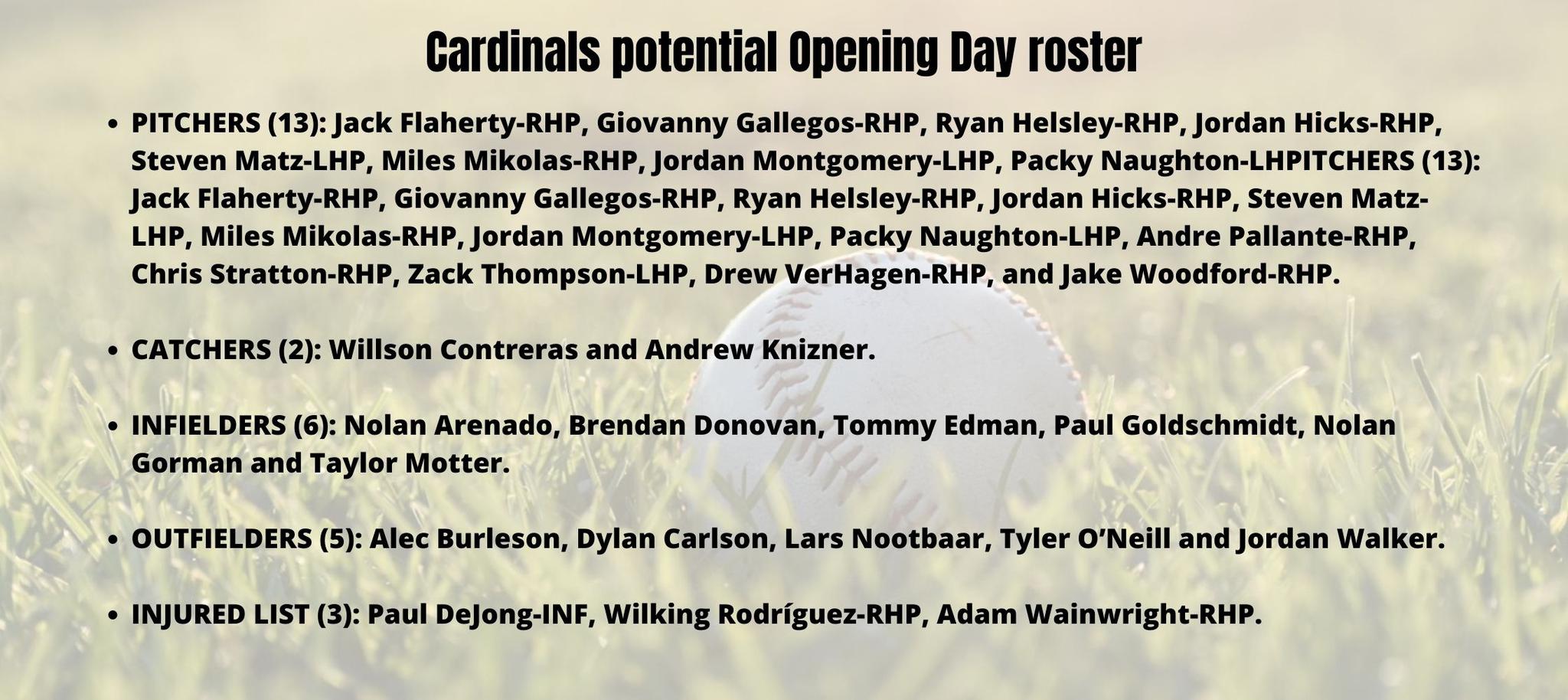Let's Play Ball
Call me biased, but of all the 30 teams in Major League Baseball, the Cardinals are by far the best. Maybe that's the St. Louisan in me, or maybe it's just pure fact.
First, we have some of the best lineups going into 2023, according to some media outlets, with a lot of successful young players. CBS even reported that the Cardinals have one of the best offenses in baseball this season. Then, you have to look at the fans. The consensus is that the Cardinals have the best fans in baseball. That's a truth preached to me growing up, and I'm sure many others had similar lessons. Cardinals fans are loyal and very forgiving. We love our team, our players, and our city.
The opening day of the baseball season is a holiday in St. Louis. Take off work, call in sick, no one cares. Everyone wants to be at the game.
It really should come as no surprise that weather affects every aspect of our lives, from what we wear, to our daily routines and even our sports. Scientific studies have examined the influence temperatures play on the game, and how "cold", "average", and "warm" temperatures impact home field advantage, home runs, and how the pitcher grips the ball. Weather and America's National Pastime are linked.
Home Field Advantage in MLB
While there have been several studies looking at the link between weather and baseball, for this post I will primarily be looking at the research from Koch and Panorska (2013) in their article titled "The Impact of Temperature on Major League Baseball."
When describing how sky conditions impact gameplay, they cited sources that claimed that teams were more offensive during cloudy-sky conditions, and were less offensive during clear-sky conditions. Studies also found that the clear-sky conditions increased the teams' home-field advantage and their potential for winning.
Here's to hoping all of the Cardinals games are on clear-sky days!
Fly Ball Distance
Koch and Panorska (2013) define cold game temperatures to be less than 60°F, games played in average conditions when the temperature is between 60°F and 83°F, and warm games played in temperatures greater than 83°F.
Temperatures play a pivotal in baseball's trajectory. Gameplay on warm/hot days will send the ball out further in the field, while on colder days, the ball doesn't travel as far. It's been found the ball travels 16 feet less in cooler weather compared to warmer weather.

Reading this study got me thinking about the David Freese walk-off home run during Game 6 of the 2011 World Series. It was a clear sky night, and the high that afternoon was in the upper 50s. By the game start time, it would have been several degrees cooler. Per the study, these temperatures during the game would have been considered "cool", which says something about the power of his swing that he hit the ball way past centerfield.
Player Performance
Studies have found that colder temperatures, and thus a decreased body core temperature, slow the player's reaction time. In summary, colder temperatures negatively impact a hitter's performance and hurt how offensive he is in the game. Additionally, in warmer temperatures, a hitter may change his normal hitting methods to hit more home runs, but this could cause fewer base hits and walks.
Pitcher's Grip
AccuWeather published an article detailing 5 ways baseball is impacted by weather. In an interview with a head baseball coach at Shippensburg University, the coach said pitchers have difficulty gripping the ball when it's hot and humid, and they pitcher is sweating a lot. On the other hand (get it) in cold weather, your fingers go numb, negatively impacting the pitcher's grip.
Other Points

I would recommend reading the entire study (I've linked it throughout the article), but here are a couple of other conclusions it found. In warmer temperatures, there was a significant increase in offensive play. Which affected the number of runs scored, batting average, slugging percentage, and home runs. Walks decreased in warm temperatures but increased in cold temperatures.
Understanding the impacts of temperatures on gameplay could be a beneficial consideration for managers when setting the lineups. Knowing that walks occur more frequently in colder weather may drive them to take a slower and more patient approach to get home runs. Conversely, in warmer weather, a strong hitter would be useful since the temperatures help propel the ball further.
Anyway, I can't speak on that last point too much as I have no experience creating a baseball lineup. What I do wish, is this...
May the Cardinals have clear skies when they play at home
May the temperatures always sit warmly around 83°F
And... may the weather be on our side throughout the season and on the hunt for red October.

0 Comments Add a Comment?